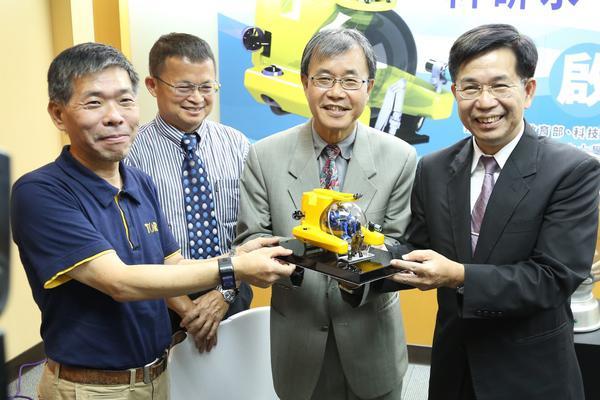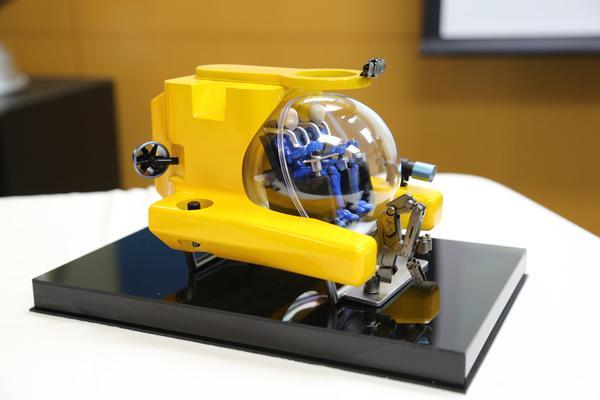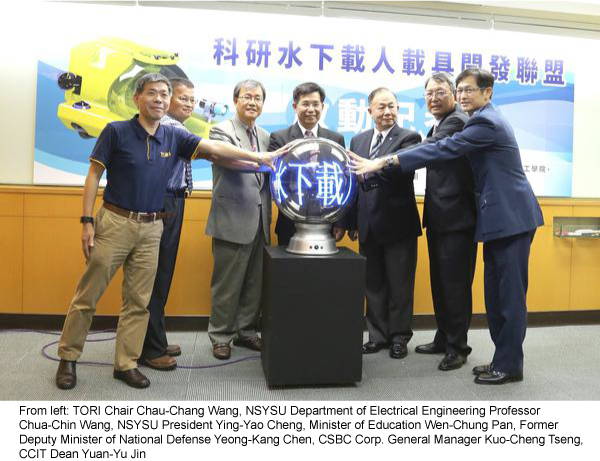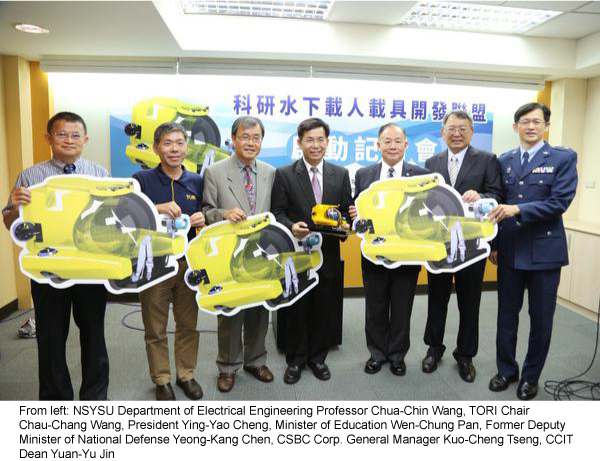Industry-Academia Collaboration: NSYSU to Build Taiwan’s First Manned-Submersible




NSYSU, Taiwan Ocean Research Institute (TORI), Chung Cheng Institute of Technology of National Defense University, Jong Shyn Shipbuilding Corp., and CSBC Corp. Taiwan have just jointly announced the collaboration in developing Taiwan’s first autonomously-developed manned-submersible and in cultivating talents for related industries. The five organizations establish the “Alliance for Manned-Submersible Development” and expects to build the vessel and actively cultivate talents in five years. Through the development of the vessel, the alliance hopes to assist in accelerating Taiwan’s Marine Renewable Energy Project, such as off-shore wind energy, Kuroshio energy generation, and deep ocean water exploration. The vessel can also support national military exercise and exploration, and underwater rescue.
Taiwan Minister of Education, Wen-Chung Pan, expressed that many wonders occurred this summer, from the launch of FORMOSAT-5 to outer space to the initiation of NSYSU’s future deep ocean exploration. The alliance can not only be seen as the milestone to the collaboration of industry, academia, and research, but also the foundation to cultivate more scholars for marine exploration. The Taiwan Ministry of Education (MOE) fully supports the alliance’s development for MIT (Made In Taiwan) submersible, which will mark a highly anticipated achievement in Taiwan’s history of vessel development autonomy.
The alliance is the first time that Taiwan integrates marine and engineering teams to undertake the task of researching submersible vessels. NSYSU President Ying-Yao Cheng stressed that the manned-submersible is one of the most important equipment for underwater inspections and is essential for military investigation and underwater rescue. “Marine sciences” is one of the characteristics of NSYSU and therefore NSYSU has been integrated the research energy of engineering and marine sciences under the support of MOE’s Aim for the Top University project. NSYSU further collaborates with other research and development organizations on marine sciences, including industries in shipbuilding, precision manufacturing, materials, electronics, information, to collaboratively develop the submersible vessel. In addition, the collaboration sparked interaction and formed transdisciplinary teaching teams with members from different disciplines, schools, and organizations. The teams can hence break away from the traditional teaching methods, innovate the course contents and teaching, and allow students to engage in practical industry endeavors. The students’ skills will be developed in close relationship with related industries.
The Former Deputy Minister of National Defense Yeong-Kang Chen mentioned in his speech that in five years, this project will demonstrate Taiwan’s ability in exploring the ocean. The vessel’s future application is not only in terms of marine research and military investigations but also in international disaster rescue. For instance, if there is a plane crash at sea, Taiwan can help with the rescue though submersible vessels.
Professor Chau-Chang Wang, the chair of TORI, emphasizes that the main goal for the development of the submersible vessel is not to reduce the cost of construction but to attract more youth who are interested in the marine sciences into the discipline and to grasp the autonomous techniques and skills to vessel building. The Taiwan government is currently actively enforcing numerous economical plans and academic development related to marine energy, all of which need to be operated in various underwater depths and environments. In terms of scientific investigation or construction, it is best to have the observer (scientist) or operator (engineers) to be present at the site by onboarding the vessel. The offshore wind energy site for the current national energy project is about 50-60m underwater; to satisfy this need, the alliance will devise the vessel plan in different stages and will attempt to develop a manned-submersible with the operating depth of 1500m underwater. The development of the vessel will be highly advantageous and helpful for Taiwan’s marine science research and construction.
In the first year, NSYSU will devote 25 million NTD to develop the system and test its safety in five stages. The manned-submersible can be utilized in many ways; other than scientific research, the vessel can be applied in the operation of CPC Corporation, Taiwan Power Company, and Chunghwa Telecom, and the commissioned use of other marine engineering companies. The five main organizations in the alliance will further invite other organizations to join the research in hope to enhance the energy and quality of Taiwan’s marine science research, bridge the technology to the industry, develop marine technology projects, systematically integrate and share experience, establish the procedure for military rescue and exercise, and simultaneously cultivate talents who possess knowledge on marine sciences and can be immediately put into the industry workforce.
